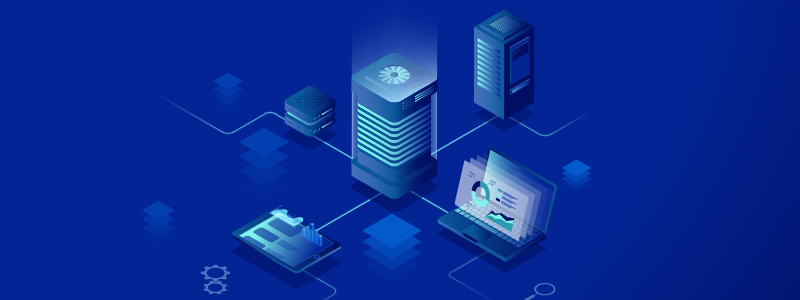Data lineage is an important concept in data governance. It outlines the path data takes from its source to its destination. Understanding data lineage helps increase transparency and decision-making for organizations reliant on data.
This complete guide examines data lineage and its significance for teams. It also covers the difference between data lineage and other important data governance terms and common data lineage techniques.
What is Data Lineage?
Data lineage refers to the journey of data from origin through various transformations and movements across different systems, processes, and environments within an organization. It provides a clear understanding of how data is created, used, and modified and insights into the relationships between different data elements.
Data lineage typically includes metadata such as data sources, transformations, calculations, and dependencies, enabling organizations to trace the flow of data and ensure its quality, accuracy, and compliance with regulatory requirements.
Data Lineage vs. Data Provenance vs. Data Governance
Data lineage, data provenance, and data governance are all crucial concepts in data management, but they address different aspects of handling data.
| Aspect |
Data Lineage |
Data Provenance |
Data Governance |
| Definition |
Data Lineage tracks data flow from origin to destination, documenting its movement and transformations. |
Data Provenance captures metadata describing the origin and history of data, including inputs, entities, systems, and processes involved. |
Data Governance establishes framework, policies, and processes for managing data assets within an organization. |
| Focus |
Flow of data |
Origin and history of data |
Management and control of data assets |
| Purpose |
Ensure data quality, traceability, and compliance. |
Enhance data trustworthiness, transparency, and reproducibility. |
Manage data consistently, securely, and in compliance with regulations and organizational objectives. |
| Key Questions |
Where does the data come from? How is it transformed? Where is it used? |
How was the data created? What entities and processes were involved? |
Who has access to data? How should data be classified and protected? What are the procedures for data quality monitoring and remediation? |
| Example |
Tracking the flow of data from databases to reports in a company. |
Recording the instruments used, parameters set, and changes made during scientific research. |
Implementing policies specifying data access, classification, protection, and quality monitoring in an organization. |
Why is Data Lineage Important?
Data lineage is crucial for several reasons:
- Trust and Confidence: Data lineage ensures transparency in data origin and transformations, building trust in its accuracy and reliability throughout its lifecycle.
- Regulatory Compliance: It helps organizations adhere to regulations by tracking data handling, storage, and usage, facilitating audits, and demonstrating compliance with regulatory requirements.
- Data Quality Management: Identifies and corrects data quality issues by tracing data to its source, enabling organizations to maintain high data integrity and reliability standards.
- Root Cause Analysis: Pinpoints errors’ origins, enabling implementation of preventive measures and ensuring data-related issues are effectively addressed at their source.
- Data Governance: Forms the foundation for establishing data management policies and procedures. Governance ensures that data is handled responsibly, securely, and by organizational objectives and standards.
- Business Intelligence: Ensures insights from BI tools are based on accurate and relevant data, empowering decision-makers with reliable information for strategic planning and performance evaluation.
Data Lineage and Data Classification
Data classification involves organizing data into categories based on origin, sensitivity, access permissions, content, and more. Meanwhile, data lineage focuses on understanding how this data moves, migrates, and transforms.
When automated, data lineage and classification assist businesses in risk management, safeguarding sensitive data, and swiftly locating specific information.
Both data lineage and classification facilitate:
- Data location/search: Classification simplifies the search for relevant data.
- Lifecycle investigation: Provide insights into the entire data lifecycle, enabling better management decisions and resource allocation.
- Risk Mitigation: Proactively identifies and mitigates data breaches or unauthorized access risks.
How Data Lineage Works
Here’s how data lineage typically works:
- Data Capture: The process begins with capturing raw data from its source. This could be data generated internally by systems such as databases, applications, and sensors or externally from sources like APIs, third-party vendors, or manual inputs.
- Metadata Collection: Alongside the data, metadata is also collected. Metadata consists of information about the data. This information includes its source, format, structure, and any applied transformations. This metadata is vital for comprehending the context and lineage of the data.
- Transformation and Processing: Once teams capture the data, it often goes through various transformations and processing steps. This process could involve data cleaning, filtering, aggregating, joining with other datasets, or applying business logic to derive meaningful insights. Each transformation somehow alters the data, and metadata is updated to reflect these changes.
- Lineage Tracking: As data moves through different systems and processes, its lineage is tracked and recorded at each stage. This step includes capturing information about where the data came from, what transformations were applied, and where it is being sent next. Lineage information typically includes timestamps, data owners, dependencies, and relationships between different datasets.
- Visualization and Analysis: Data lineage information is often visualized through diagrams or lineage graphs, which provide a clear, graphical representation of how data flows through the organization’s infrastructure. These visualizations help stakeholders understand the end-to-end data journey and identify dependencies, bottlenecks, and potential points of failure.
- Data Governance and Compliance: Data lineage ensures data governance and regulatory compliance. Organizations can demonstrate accountability, traceability, and data quality assurance to regulatory bodies and internal stakeholders by providing a complete audit trail of data movement and transformations.
- Impact Analysis and Risk Management: Data lineage also enables organizations to perform impact analysis and assess the potential risks associated with changes to data sources, processes, or systems. Organizations can make insightful decisions and reduce risks proactively by understanding how changes in one part of the data ecosystem may affect downstream systems or analytics.
Data Lineage Techniques
There are different approaches to performing data lineage. Here is an overview of these techniques:
Lineage by Data Tagging
This technique tags data elements with metadata describing their characteristics, sources, transformations, and destinations. These tags provide a clear understanding of how data is used and transformed as it moves through different processing stages.
Example: A retail company tags each sales transaction with metadata detailing the store location, timestamp, and product information. As the data moves through various stages of analysis, such as aggregation by region or product category, each transformation step is recorded with corresponding lineage metadata. This act ensures traceability from the raw transaction data to the final analytical reports.
Self-contained Lineage
This technique involves embedding lineage information directly within the data itself. This embedding could be headers, footers, or embedded metadata within the data file. Self-contained lineage ensures that the lineage information travels with the data, making it easier to track and understand its history.
Example: A marketing department maintains a spreadsheet containing campaign performance metrics. The spreadsheet includes a dedicated “Lineage” tab where each column is annotated with information about its source (e.g., CRM system, advertising platform), data transformations (e.g., calculations, filtering), and destination (e.g., dashboard, report). This self-contained lineage information allows analysts to understand the data’s history without external documentation.
Lineage by Parsing
Lineage by parsing involves analyzing data processing pipelines or scripts to infer the data lineage. This technique parses through the code or configuration files of data transformations to identify data sources, transformations applied, and final outputs. By understanding the processing logic, lineage can be reconstructed.
Example: A financial services firm parses Python scripts used for data transformations in its risk management system. The organization infers lineage information such as source tables, join conditions, and target tables by analyzing the scripts’ logic and SQL queries. This parsed lineage data is then used to generate a graphical representation of data flow from raw market data to risk models.
Pattern-based Lineage
Data lineage is inferred based on predefined patterns or rules in pattern-based lineage. These patterns could be regular expressions, data schemas, or other structural indicators that define how data is transformed and propagated. Pattern-based lineage can automate lineage tracking by identifying common patterns in data transformations.
Example: A software company employs pattern-based lineage techniques to track data flow in its CRM system. By identifying common patterns in data import/export processes and database queries, such as “Load Customer Data” or “Export Sales Reports,” the organization automatically infers lineage relationships. This approach simplifies lineage tracking in large-scale CRM deployments with numerous data integration points.
Data Lineage Use Cases
Modern businesses increasingly seek real-time insights, yet their acquisition hinges on a thorough understanding of data and its journey through the data pipeline. Teams can enhance workflows using end-to-end data lineage tools in various ways:
Data modeling: Enterprises must define underlying data structures to visualize different data elements and their corresponding linkages. Data lineage aids in modeling these relationships, illustrating dependencies across the data ecosystem. As data evolves, with new sources and integrations emerging, businesses must adapt their data models accordingly. Data lineage accurately reflects these changes through data model diagrams, highlighting new or outdated connections. This process aids analysts and data scientists conduct valuable and timely analyses by better understanding data sets.
Data migration: When transitioning to new storage or software, organizations use data migration to move data from one location to another. Data lineage offers insights into the movement and progress of data through the organization, from one location to another, aiding in planning system migrations or upgrades. It also enables teams to streamline data systems by archiving or deleting obsolete data, improving overall performance by reducing data volume.
Compliance: Data noncompliance can be time-consuming and costly. Data lineage is a compliance mechanism for auditing, risk management, and ensuring adherence to data governance policies and regulations. For instance, GDPR legislation, enacted in 2016, protects personal data in the EU and EEA, granting individuals greater data control. Similarly, the California Consumer Privacy Act (CCPA) mandates businesses to inform consumers about data collection. Data lineage tools are crucial for ensuring compliance as they provide visibility into the flow of data.
Impact Analysis: Data lineage tools provide visibility into the impact of business changes, particularly on downstream reporting. For example, changes in data element names can affect dashboards and user access. Data lineage also assesses the impact of data errors and their exposure across the organization. By tracing errors to their source, data lineage facilitates communication with relevant teams, ensuring trust in business intelligence reports and data sources.
Data Lineage Tools
Data lineage tools enable organizations to understand and manage dataflows within an organization. Here are some key features commonly found in data lineage tools:
- Automated Lineage Discovery: The tool should automatically discover and map data lineage across various sources, systems, and transformations, reducing manual effort.
- End-to-End Lineage Visualization: Providing a clear, visual representation of data lineage from source to destination, including databases, applications, and processes.
- Versioning and Change Tracking: Tracking changes to data lineage over time, enabling users to understand how data flows have evolved and who made the changes.
- Metadata Management: Capture and manage metadata associated with data sources, transformations, and lineage relationships, ensuring data governance and compliance.
- Data Quality Monitoring: Monitoring data quality throughout the lineage, identifying issues such as data inconsistencies, anomalies, or quality degradation.
- Dependency Mapping: Identifying dependencies between different data elements, systems, and processes, helping users understand the relationships between data entities.
- Business Glossary Integration: Integration with a business glossary or data dictionary to provide context and meaning to data elements and lineage information.
- Search and Discovery: Advanced search capabilities to quickly find specific data elements, sources, or lineage paths within large datasets.
- Security and Access Control: Role-based access control (RBAC) and encryption mechanisms ensure only authorized users can view and modify data lineage information.
Conclusion
Data lineage is a vital part of effective data governance. From improving data quality and ensuring compliance to facilitating strategic decision-making, understanding data lineage gives organizations valuable insights into their data. Using this knowledge, data teams can optimize processes, mitigate risks, and maximize their data’s potential.
Astera is an end-to-end data management tool with comprehensive data governance features. It empowers business users to manage and control data with a simple, no-code interface and extensive customer support.
Try Astera now with a free 14-day trial or get in touch to discuss a specific use case.
Authors:
 Abeeha Jaffery
Abeeha Jaffery




